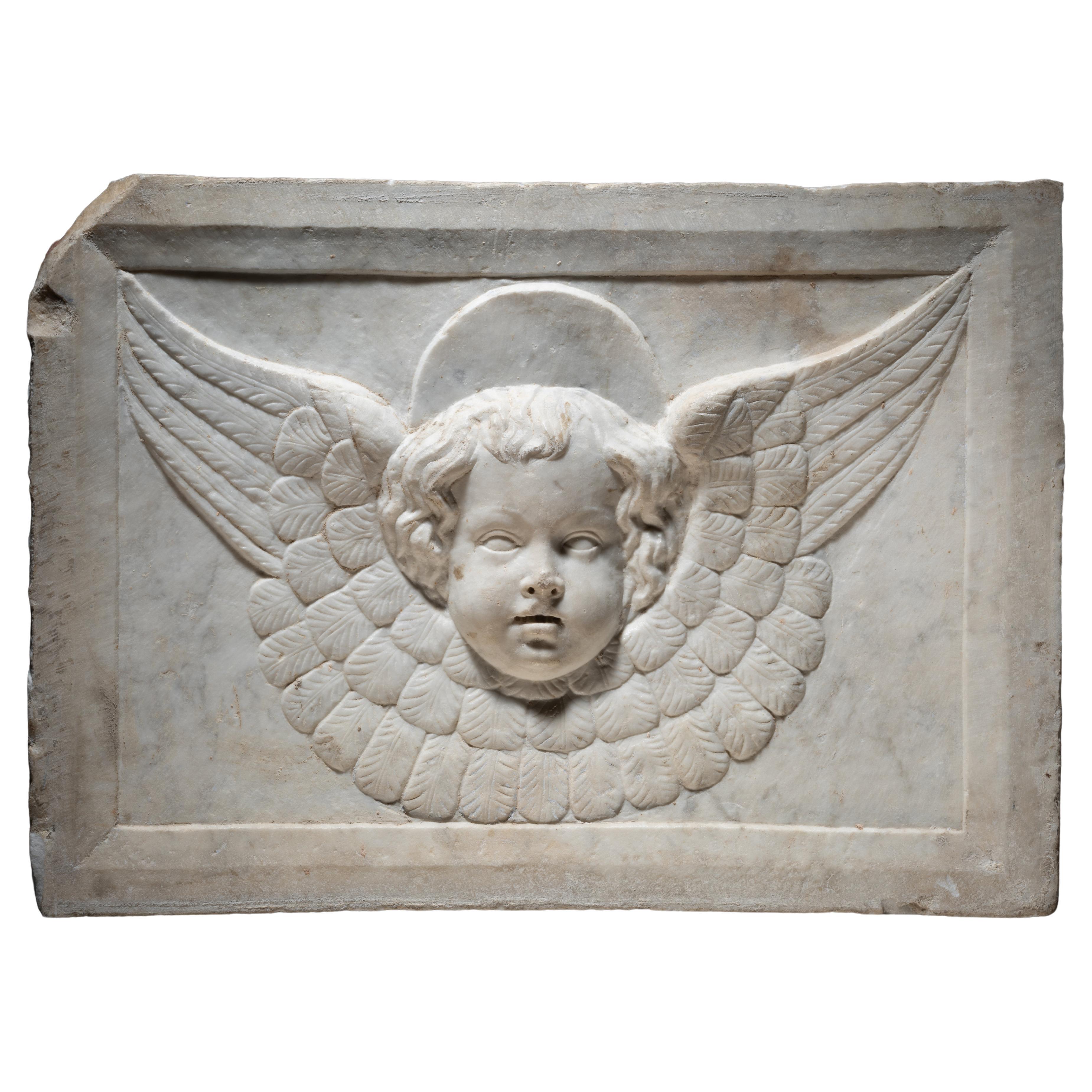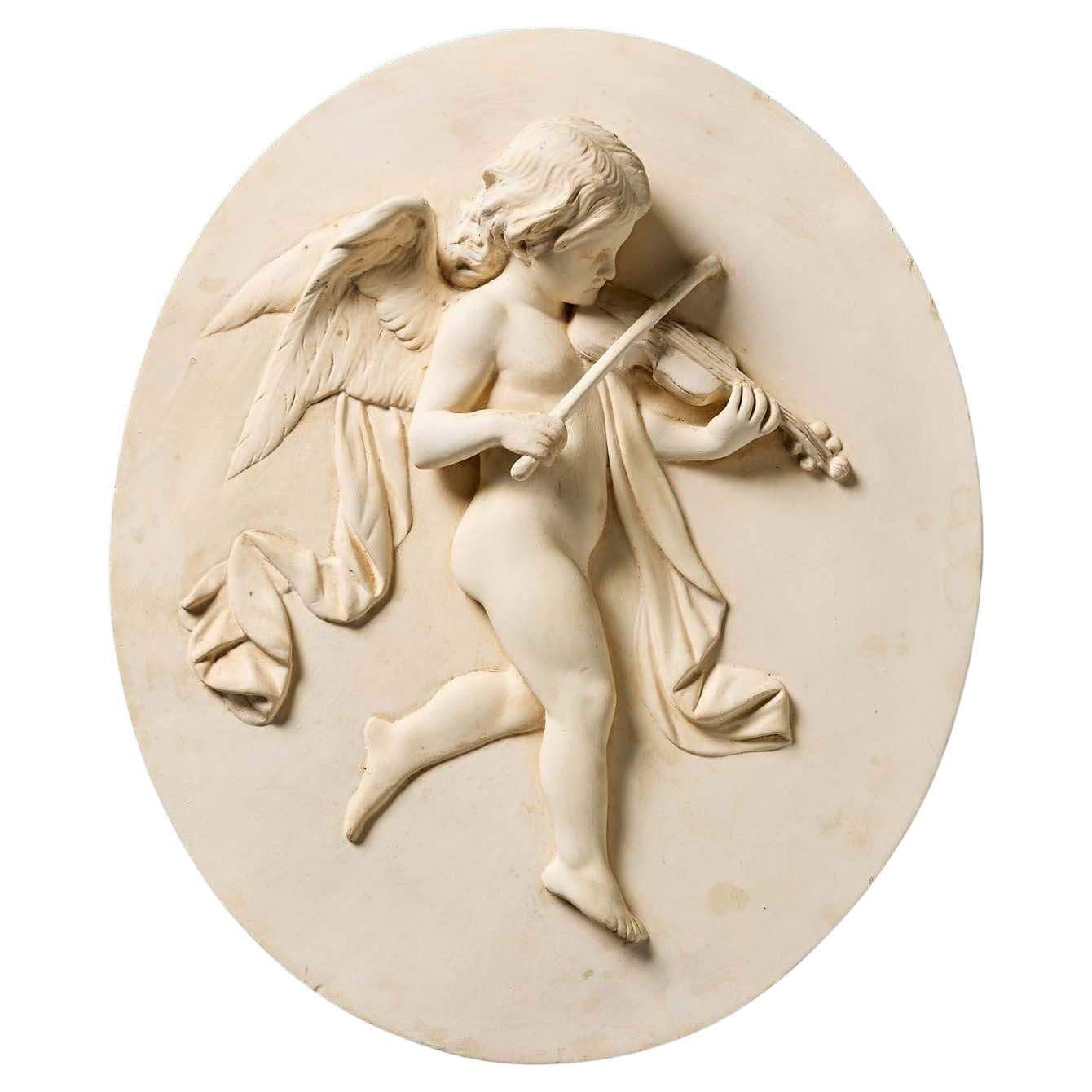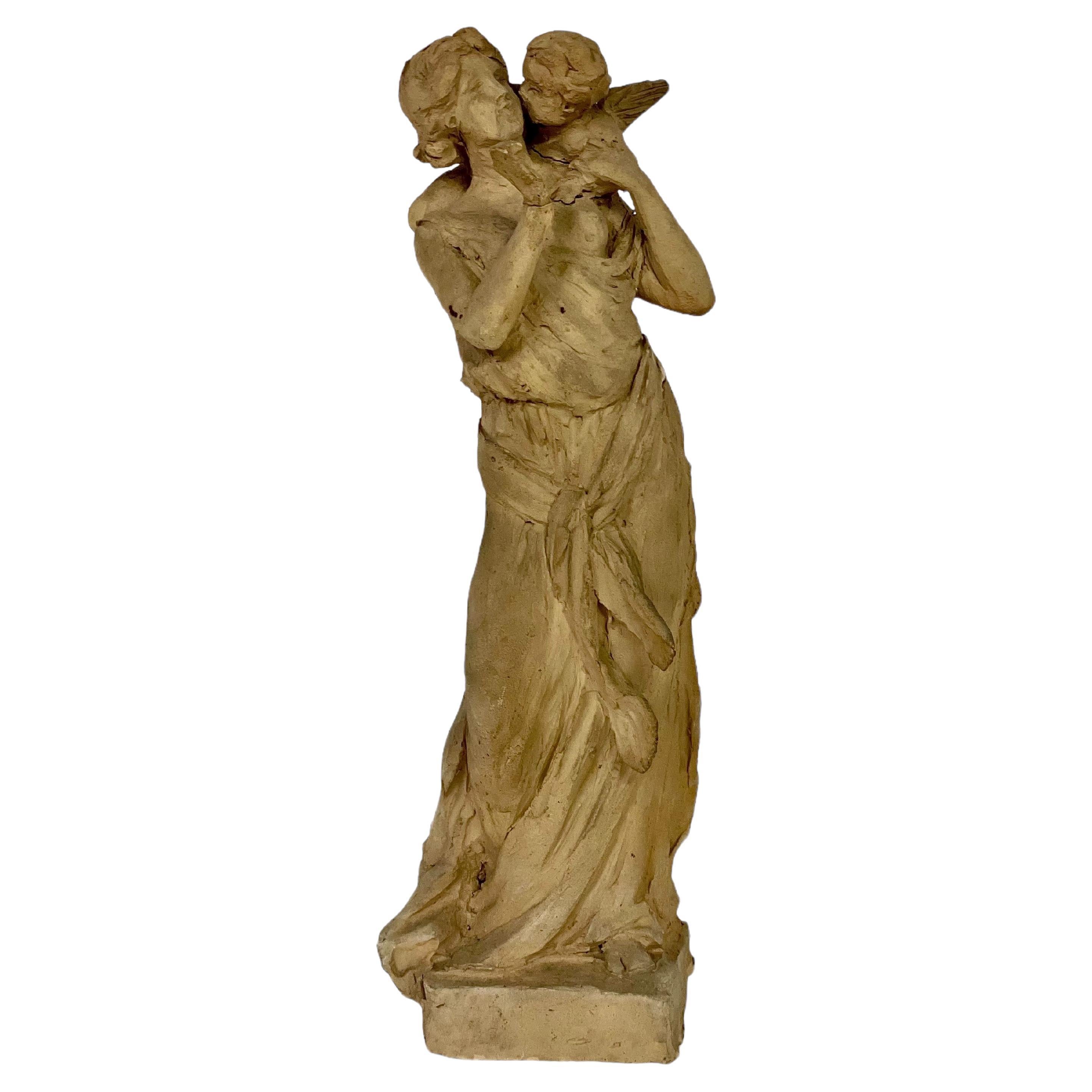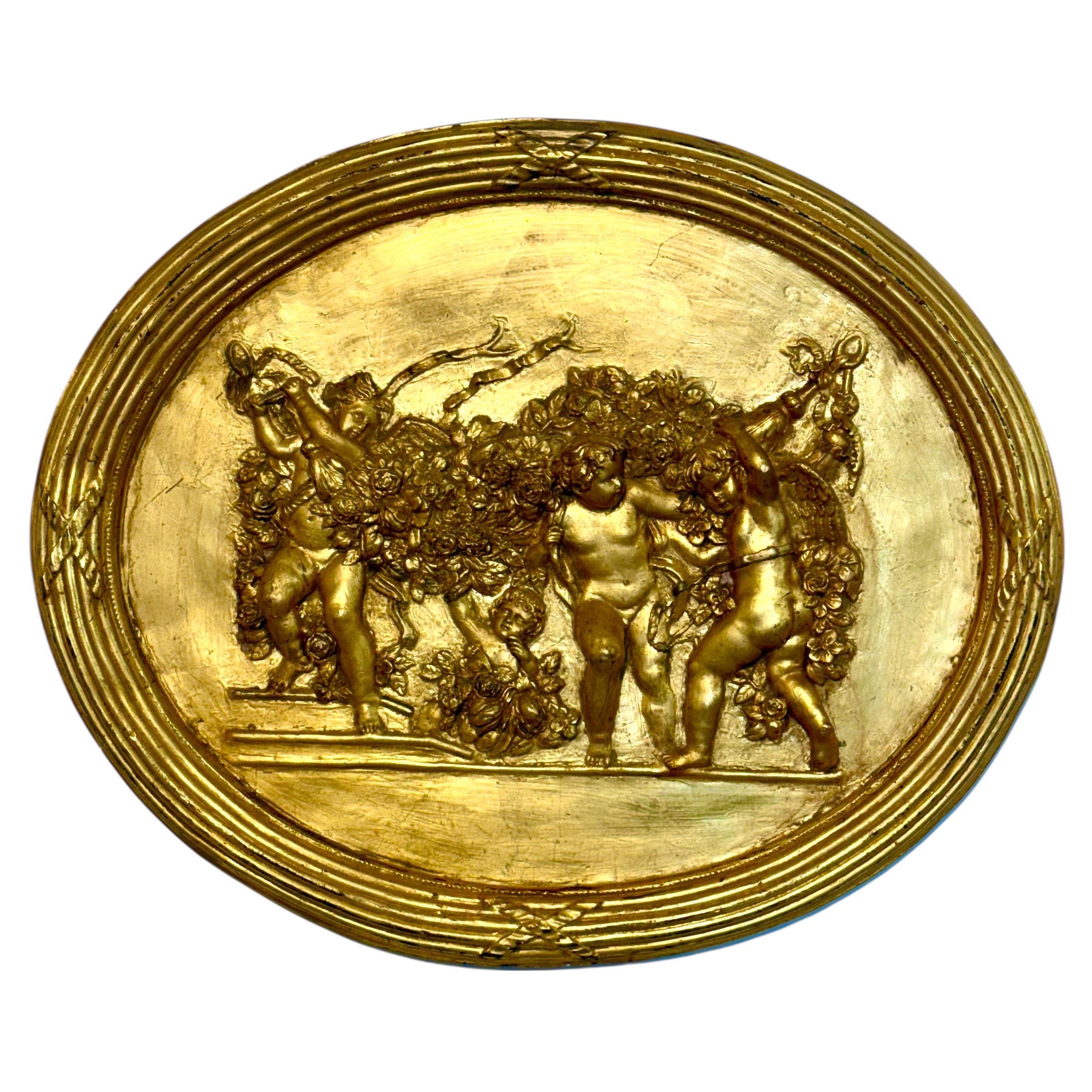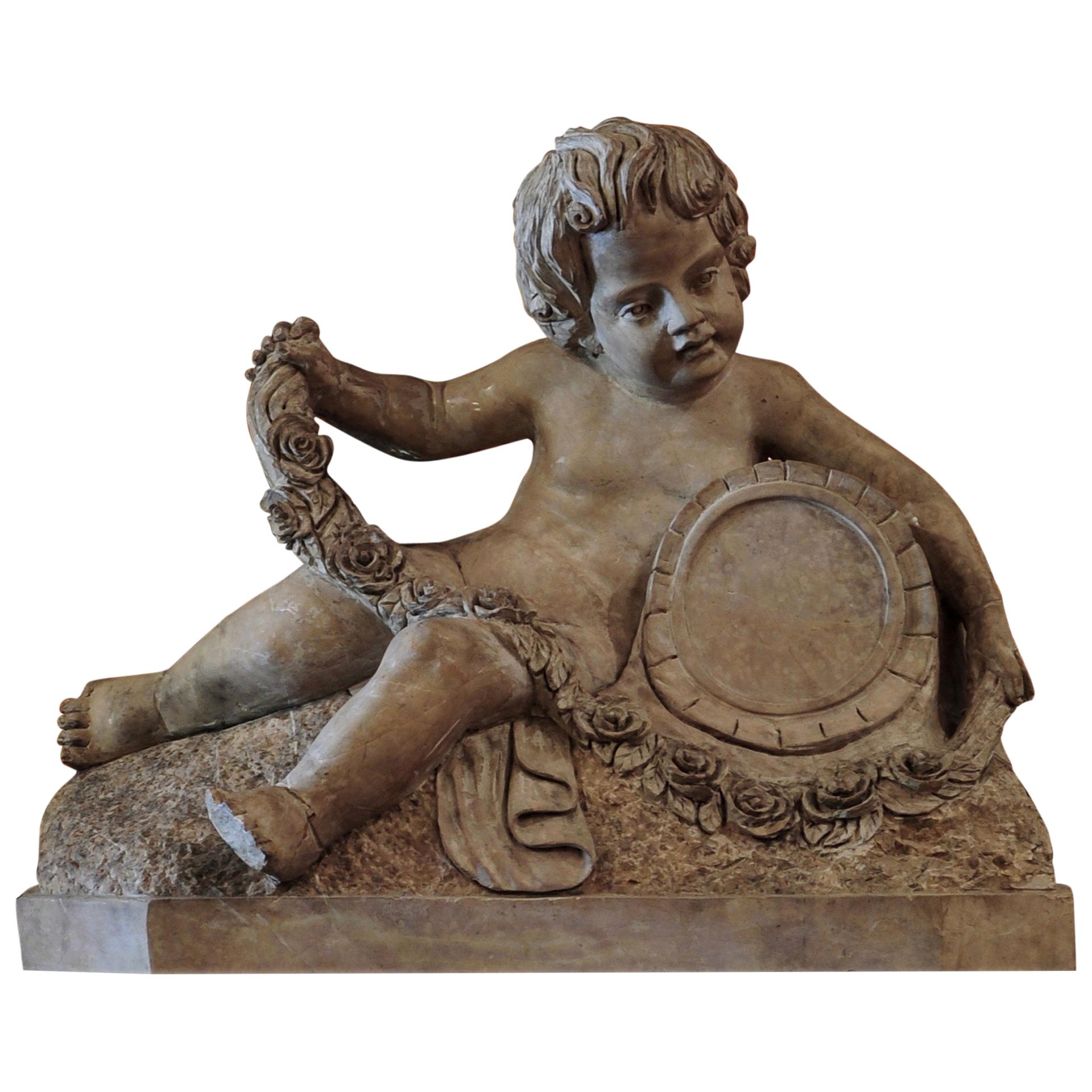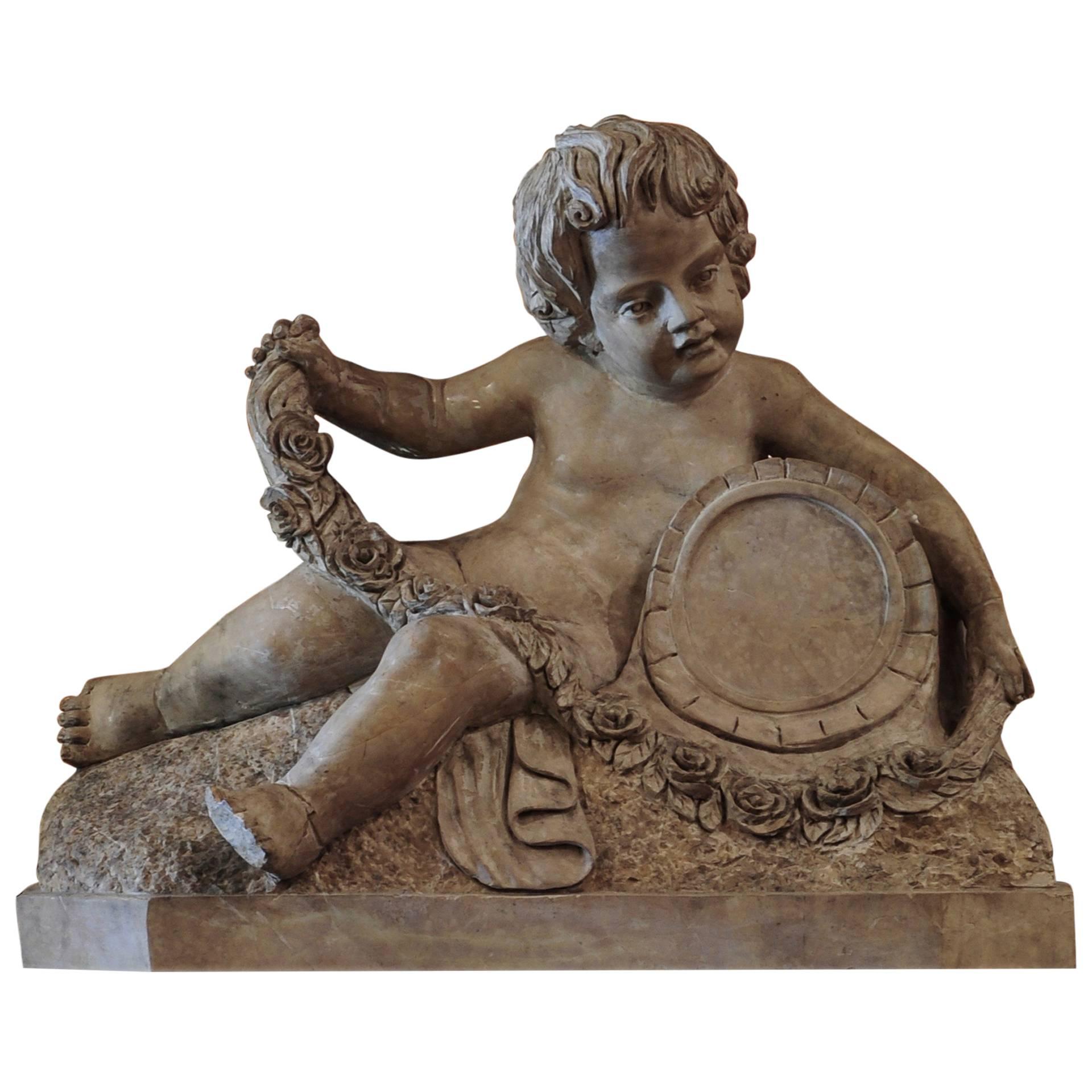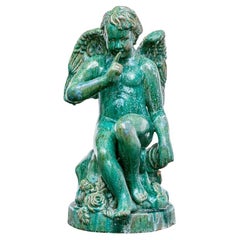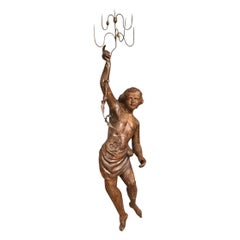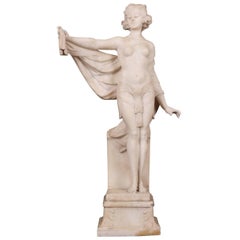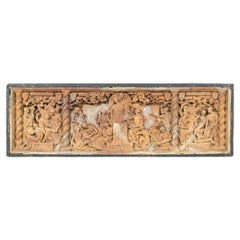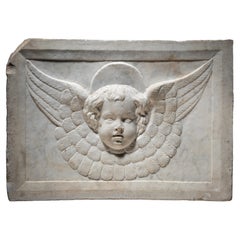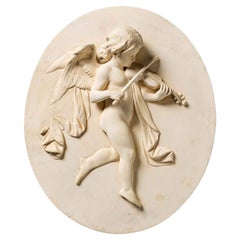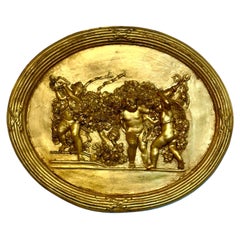Items Similar to Carved Stone Neoclassical Roundel, Winged Figure With A Putto
Want more images or videos?
Request additional images or videos from the seller
1 of 11
Carved Stone Neoclassical Roundel, Winged Figure With A Putto
$4,500
£3,412.16
€3,914.90
CA$6,402.95
A$6,945.75
CHF 3,652.46
MX$84,515.78
NOK 45,661.70
SEK 43,064.59
DKK 29,229.76
About the Item
A finely carved yellow stone neoclassical roundel in relief with a flying winged female figure in flowing pleated robes with a putto holding a flaming torch and catching a ride on her shoulder. She looks back at him as she tosses roses in the sky. In the manner of a classical winged Victory figure but embellished with the sweet putto and the roses in a whimsical neoclassical composition. Mounted in an antiqued rust tone iron frame with loop for hanging.
H. 39" with ring, Diam. 33", Depth 2 1/4"
Condition: There are some age-related slight scrapes to the drapery, overall very good condition with a dramatic presentation.
Please see all detail photos.
- Dimensions:Height: 2.25 in (5.72 cm)Diameter: 33 in (83.82 cm)
- Style:Neoclassical (In the Style Of)
- Materials and Techniques:
- Period:
- Date of Manufacture:20th Century
- Condition:Wear consistent with age and use.
- Seller Location:Bridgeport, CT
- Reference Number:Seller: 2373481stDibs: LU1755233082712
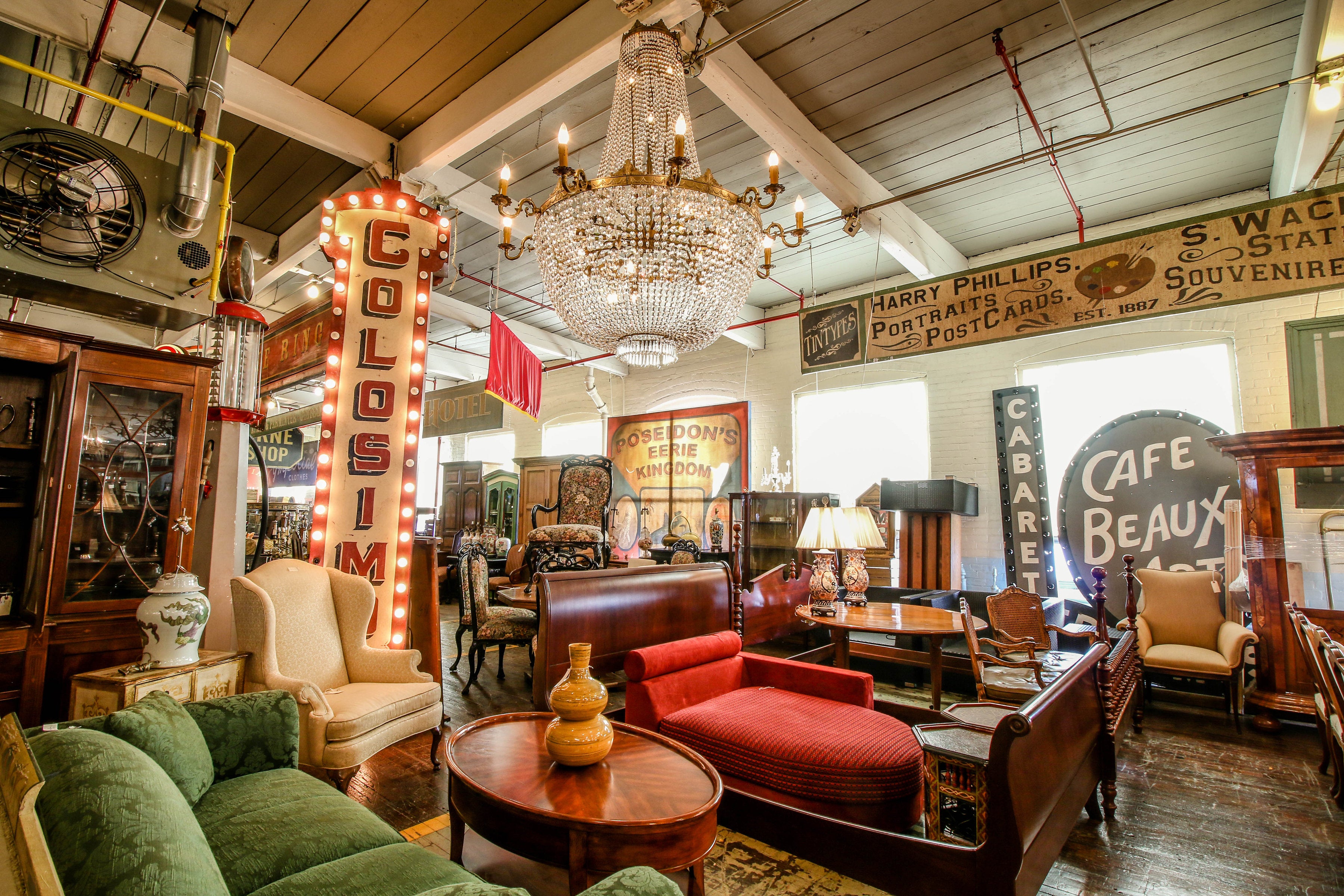
About the Seller
5.0
Vetted Professional Seller
Every seller passes strict standards for authenticity and reliability
1stDibs seller since 2015
2,090 sales on 1stDibs
Typical response time: <1 hour
- ShippingRetrieving quote...Shipping from: Bridgeport, CT
- Return Policy
Authenticity Guarantee
In the unlikely event there’s an issue with an item’s authenticity, contact us within 1 year for a full refund. DetailsMoney-Back Guarantee
If your item is not as described, is damaged in transit, or does not arrive, contact us within 7 days for a full refund. Details24-Hour Cancellation
You have a 24-hour grace period in which to reconsider your purchase, with no questions asked.Vetted Professional Sellers
Our world-class sellers must adhere to strict standards for service and quality, maintaining the integrity of our listings.Price-Match Guarantee
If you find that a seller listed the same item for a lower price elsewhere, we’ll match it.Trusted Global Delivery
Our best-in-class carrier network provides specialized shipping options worldwide, including custom delivery.More From This Seller
View AllLarge Glazed Terracotta Putto Garden Sculpture
Located in Bridgeport, CT
A large garden sculpture in the form of a seated winged putto with hand to lips appearing to shush. The putto is sitting on a plith among flowers and has one hand on a quiver. The gr...
Category
20th Century Renaissance Statues
Materials
Terracotta
Large Antique Carved and Painted Putto Supporting an Iron Candelabra
Located in Bridgeport, CT
A large scale dramatic putto figure with drapery around his waist, flying and holding up a painted tole shaft with six candle prick spikes. The shaft decorated with painted tole acan...
Category
Antique 19th Century Classical Greek Wall-mounted Sculptures
Materials
Iron
Adolpho Cipriani 'Italian, Active 1880-1930' Alabaster Figure
By Adolfo Cipriani
Located in Bridgeport, CT
The shy semi-nude maiden, her hair in ringlets with rosette ornaments, is dressed in a loincloth with wings in relief and chains. She is wrapped in a long cloak that she holds out to...
Category
Early 20th Century Italian Classical Greek Figurative Sculptures
Materials
Alabaster
Large Terracotta Neoclassical Relief Sculpture Titled "Study, Service & Counsel
Located in Bridgeport, CT
Terracotta relief titled "Study, Service, Counsel." It depicts a series of figures engaged in various activities, separated into three distinct sections by scrolling columns and labe...
Category
Antique 19th Century Classical Greek Wall-mounted Sculptures
Materials
Terracotta, Wood
Antique Cast Lead French Style Garden Statue Of A Putto With Wheat Sheaf
Located in Bridgeport, CT
The figure of a French style putto holding a sickle and wheat sheaf representing the harvest as one of the four seasons' figures. Standing on an octagonal base.
Dimensions:
27" H ...
Category
Antique 19th Century French Provincial Statues
Materials
Lead
Exceptional Bronze Garden Sculpture Of Neoclassical Youth With Tambourine
Located in Bridgeport, CT
A large bronze garden statue depicting a smiling Neoclassical youth wearing fleece sash around the hip, posed walking over a circular base with a tambourine raised high.The bronze ...
Category
Early 20th Century Neoclassical Statues
Materials
Bronze
You May Also Like
Cercle of Jacopo della Pila - Marble relief depicting a winged Cherub
Located in Bruxelles, BE
Cercle of Jacopo della Pila (Lombard, in Naples 1471-1502)
Marble relief depicting a winged Cherub
Naples, second half of15th century
40 x 57 x 12 cm
Exquisitely carved, this relief portrays a winged cherub with cascading hair and delicate features. The cherub's plump, smooth countenance, rounded cheeks, outlined lips, and finely drawn nose emanate a sense of tenderness. The quadrangular module, is adorned with a carved frame. The relief ascends gradually, transitioning from the low relief of the wings to the high relief of the head.
The rectangular frame and the subtly curved form of the artwork suggest that the relief likely adorned the upper part of an arch or a vaulted chapel. The type is that of the perspective room with a coffered ceiling decorated with figures of winged cherubs, which is found in various Neapolitan chapels of the 15th century. Coffered ceilings attest to the recovery of antiquity and the search for luxury in Renaissance architecture, first in Florence, then in Rome and Naples. The majority of the numerous family chapels and tombs built during the late fifteenth century in south of Italy employ the new formal vocabulary of the Florentine Renaissance in a self-confident manner that permitted a broad spectrum of variations.
The escalating admiration for the classical world, coupled with the development of perspective, significantly contributed to the Renaissance endorsement of coffered ceilings. This artistic and constructive device drew inspiration from the intricate marble patterns observed in historical landmarks such as the Arch of Titus, the Temple of Vesta in Tivoli, the Pantheon, and the Basilica of Maxentius. A distilled product of both mathematical and artistic cultures, deeply scrutinizing the ancient world, the coffered ceiling plays a vital role in the perspective construction of space with its regular and directional geometry. The motif of the coffered ceiling decorated with cherubs in relief was introduced in Naples by Francesco Laurana in the plastic decoration of the Arch of Castelnuovo. Laurana's impact on the art scene in the south of Italy was profound. The introduction of the winged cherub into the region's artistic vocabulary bridged the gap between the classical and the contemporary, creating a synthesis that resonated with both aesthetic and spiritual sensibilities. His influence extended beyond the immediate visual appeal, shaping the cultural identity of the Renaissance in southern Italy. Although the plastic decoration of the Arch of Castelnuovo cannot certainly be ascribed to a mature Renaissance style, it was precisely on this occasion that the sculptors who worked there could get to know and export throughout the Italian peninsula that type of "Florentine classicism" which, even in the 15th century Naples, was conditioned by the Burgundian culture imported into the Kingdom by Alfonso of Aragon himself, with artists called from Spain and Northern Europe. The coffered ceiling, with its geometric patterns and Laurana's winged cherubs nestled within, became a symbol of refinement and cultural sophistication. The relief sculptures, carefully integrated into the overall design, transformed the ceiling into a celestial realm, inviting viewers to contemplate the divine while immersed in the grandeur of the Renaissance space.
Similar winged cherubs appears also in the Naples cathedral. Within the renowned Succorpo Chapel, a mesmerizing marble coffered ceiling adorned with cherubs epitomizes the splendor of the Neapolitan Renaissance. The interplay of light and shadow on the textured surface of the marble coffered ceiling introduces an ethereal dimension, providing an immersive visual experience for observers. The geometric precision and the repeated patterns, reminiscent of classical motifs, establish a sense of harmony and balance that has become the hallmark of the Neapolitan interpretation of Florentine Renaissance aesthetics.
Although probably intended to be admired from a distance, this cherub is intricately detailed and exquisitely rendered: the face and hair are elegantly outlined and the feathers are textured through juxtaposed lines. The marble, both figurative and decorative, adheres to the principles of balance and restrained ornamentation typical of the « Florentine Classicism ». Harmonious shapes and gracefully orchestrated curves , rooted in the classical repertoire, converge to evoke a sense of ethereal beauty. The surface displays the masterful use of a chisel to intricately carve the feathers and facial features, creating an almost abstract quality.
This work is a testament to a sculptor of great skill and rich figurative knowledge, seamlessly blending classical firmness in contours with a refined treatment of the marble's surface. The combination of tradition and innovation point to a stylistic idiom from Lombardy, in particular we can find some comparaisons with the works of Jacopo della Pila, sculptor of Lombard origin working in Naples in the second half of the 15th century. He is documented there between 1471 and 1502, and is a protagonist of the Aragon Renaissance in the second half of the Quattrocento, together with the other great Northern sculptor active in the kingdom, Domenico Gagini.
the first commission he received dates back to August 9, 1471, when Jacopo publicly committed to sculpting the funerary monument of Archbishop Nicola Piscicelli to be placed in the Cathedral of Salerno. The last known work is an altar ordered on July 29, 1502, by the noble Jacopo Rocco for the church of San Lorenzo Maggiore in Naples. Between these two chronological extremes (1471-1502), we must place the fervent activity of the artist, who had trained in Rome, perhaps under the guidance of Paolo Romano but also engaged in dialogue with other major artists of the city, especially Isaia da Pisa. He enriched his experience in Naples, initially drawing inspiration from the works of Domenico Gagini and later from the Tuscan masterpieces of Antonio Rossellino and Benedetto da Maiano destined for the church of Santa Maria di Monteoliveto. Jacopo della Pila's artistic personality is thus based on a complex interplay of influences, contributing to the definition of a highly personal style.
Close comparaison can be made between our cherub and the winged angels reliefs...
Category
Antique 15th Century and Earlier Italian Renaissance Figurative Sculptures
Materials
Marble
$22,961 Sale Price
20% Off
Antique Oval Plaster Relief Plaque of a Musical Putto
Located in Wormelow, Herefordshire
An interesting antique oval plaster relief plaque of a musical putto, dating to circa 1870. The putto or winged cherub is well-captured, with great wings and a shawl on its back as i...
Category
Antique Mid-19th Century English Neoclassical Decorative Art
Materials
Plaster
Terracotta Statuette of a Goddess and Winged Cherub
Located in LA CIOTAT, FR
A superb terracotta statuette depicting a Grecian-style woman in a flowing gown, into whose ear a winged cherub is whispering. Although crafted in...
Category
Early 20th Century French Figurative Sculptures
Materials
Earthenware, Terracotta
19th Century Gilded Plaster Oval Bas-Relief with Putti and Garlands
Located in LA CIOTAT, FR
This refined oval bas-relief in gilded plaster is a remarkable example of 19th century decorative art in the neoclassical tradition. The composition depicts a lively scene of playful...
Category
Antique 19th Century French Wall-mounted Sculptures
Materials
Plaster
18th Century Sculpted Verona Marble Putto
Located in Vosselaar, BE
Depictions of young angelic boys are also known as putti, or putto for a single one. Since the 17th century on they remained popular and are found in various forms. Perhaps the most known version is Cupid. Looking at their attributes time periods can be narrowed down. In this example we see a rose Guirlande and a medaillon which are typical for the late 18th-early 19th century. The Rosso Verona Marble...
Category
Antique Late 18th Century Italian Neoclassical Figurative Sculptures
Materials
Marble
18th Century Sculpted Verona Marble Putto
Located in Vosselaar, BE
Depictions of young angelic boys are also known as putti, or putto for a single one. Since the 17th century on they remained popular and are found in various forms. Perhaps the most known version is Cupid. Looking at their attributes time periods can be narrowed down. In this example we see a rose Guirlande and a medaillon which are typical for the late 18th- early 19th century. The Rosso Verona Marble...
Category
Antique Late 18th Century Italian Neoclassical Figurative Sculptures
Materials
Marble
More Ways To Browse
Neoclassical Relief
Carved Stone Relief
Stone Putto
Oriental Figure
Profile Medallion
Red Marble Sculpture
Sculpture Bali
Sculpture Woman Metal
Staffordshire Figures
Tricorn Hat
Wood Warrior
Art Deco Figure Nude
Bronze Children Sculpture
Carved Marble Figure Of Child
Ceramic Boy
Chinese Men
Chinese Rose Quartz
Flapper Girl
